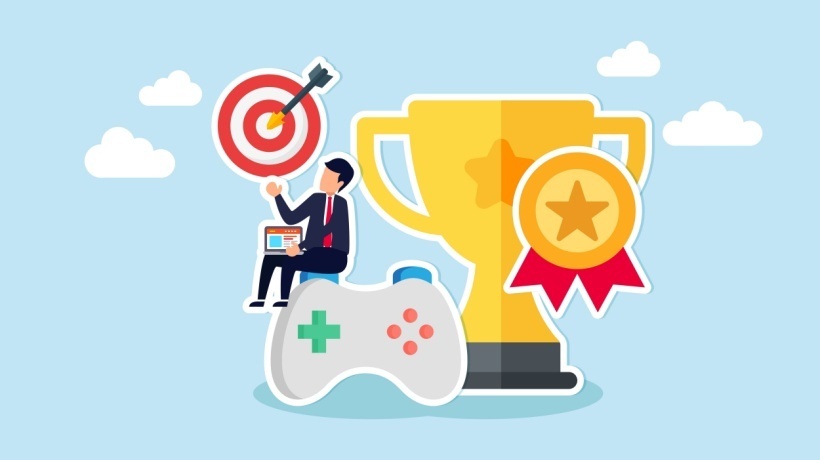A Guide To Enhancing Engagement And Effectiveness
Instructional Designers constantly seek innovative methods to captivate learners and enhance the learning experience. One such strategy that has gained significant traction is gamification in eLearning. Gamification, integrating game mechanics into non-game environments like learning platforms, aims to increase engagement, motivate learners, and foster a deeper connection with the material. This article delves into the best practices for gamifying learning content, supported by real-world examples and actionable tips for Instructional Designers aiming to implement these strategies effectively.
Understanding Gamification In eLearning
Gamification in eLearning involves using game design elements in educational contexts to motivate participation, engagement, and loyalty. This approach taps into learners' intrinsic motivation, making the learning process more engaging and enjoyable. Key game mechanics include points, levels, badges, leaderboards, and challenges. These elements are not just about adding fun; they leverage human psychology to encourage a deeper engagement with the content.
Best Practices For Engagement Through Gamification In eLearning
Align Game Mechanics With Learning Objectives
The primary goal of gamification is to enhance learning, not distract from it. Choose game elements that align with and support your educational goals. For instance, if critical thinking is a learning objective, incorporating puzzles or challenges that require deep analysis can be highly effective.
Keep It Simple
Start with simple game mechanics and gradually introduce more complexity. Overloading learners with complicated rules or too many elements can lead to confusion rather than engagement.
Provide Instant Feedback
One of the strengths of gamification is its ability to provide immediate feedback, which is crucial for learning. Instant feedback helps learners understand what they did right or wrong, facilitating quicker adjustments and promoting learning through trial and error.
Foster A Sense Of Achievement And Progress
Use levels, points, and badges to reflect learners' progress. These elements help learners see their growth, which can be incredibly motivating.
Encourage Social Interaction
Incorporate elements that promote collaboration and competition, such as leaderboards or group challenges. Social interactions make learning more enjoyable and encourage knowledge sharing and peer learning.
Personalize The Learning Experience
Not all learners are the same. Gamified learning should offer personalized paths and challenges that cater to different learning styles and paces.
Incorporate Storytelling
Embedding gamification elements within a narrative can enhance engagement and make learning more memorable. Stories create context and can help learners see real-world applications of their knowledge.
Real-World Examples Of Successful Gamification In eLearning
- A leading language learning app
A leading language learning app effectively uses gamification to motivate learners. It incorporates points, streaks to maintain daily learning habits, and levels that unlock as learners progress. The app provides instant feedback and adapts to the learner's pace, making language learning accessible and engaging. - Online learning platform
Salesforce's online learning platform gamifies the process of learning to use its products. Users earn badges and points as they complete modules, with the platform offering a personalized learning experience through tailored recommendations. - Fitness game
Although not a traditional eLearning platform, an excellent example of gamification applied to fitness uses storytelling and missions to motivate users to run more, showcasing how gamification can make even physical exercise engaging through a narrative.
Actionable Tips For Implementing Engagement Through Gamification
Understand Your Audience
Before implementing gamification, know your learners. What motivates them? What are their learning preferences? This understanding will guide the choice of game mechanics and design.
Test And Iterate
Implement gamification in phases. Start small, gather feedback, and refine your approach. Continuous testing and iteration are key to developing an effective gamified learning experience.
Balance Challenge And Skill
Ensure the challenges are neither easy nor hard. The goal is to strike a balance where learners feel challenged but not frustrated.
Integrate With The Learning Management System (LMS)
For a seamless experience, ensure that gamification elements are well integrated into the LMS or eLearning platform.
Measure Success
Define what success looks like early on, whether it's increased engagement, higher completion rates, or improved test scores. Use these metrics to evaluate the effectiveness of your gamification strategy.
Conclusion
In conclusion, gamification in eLearning offers a powerful tool to make learning more engaging, enjoyable, and effective. By following best practices and learning from real-world examples, Instructional Designers can create memorable and motivating learning experiences. Remember, the ultimate goal of gamification is to enhance.

